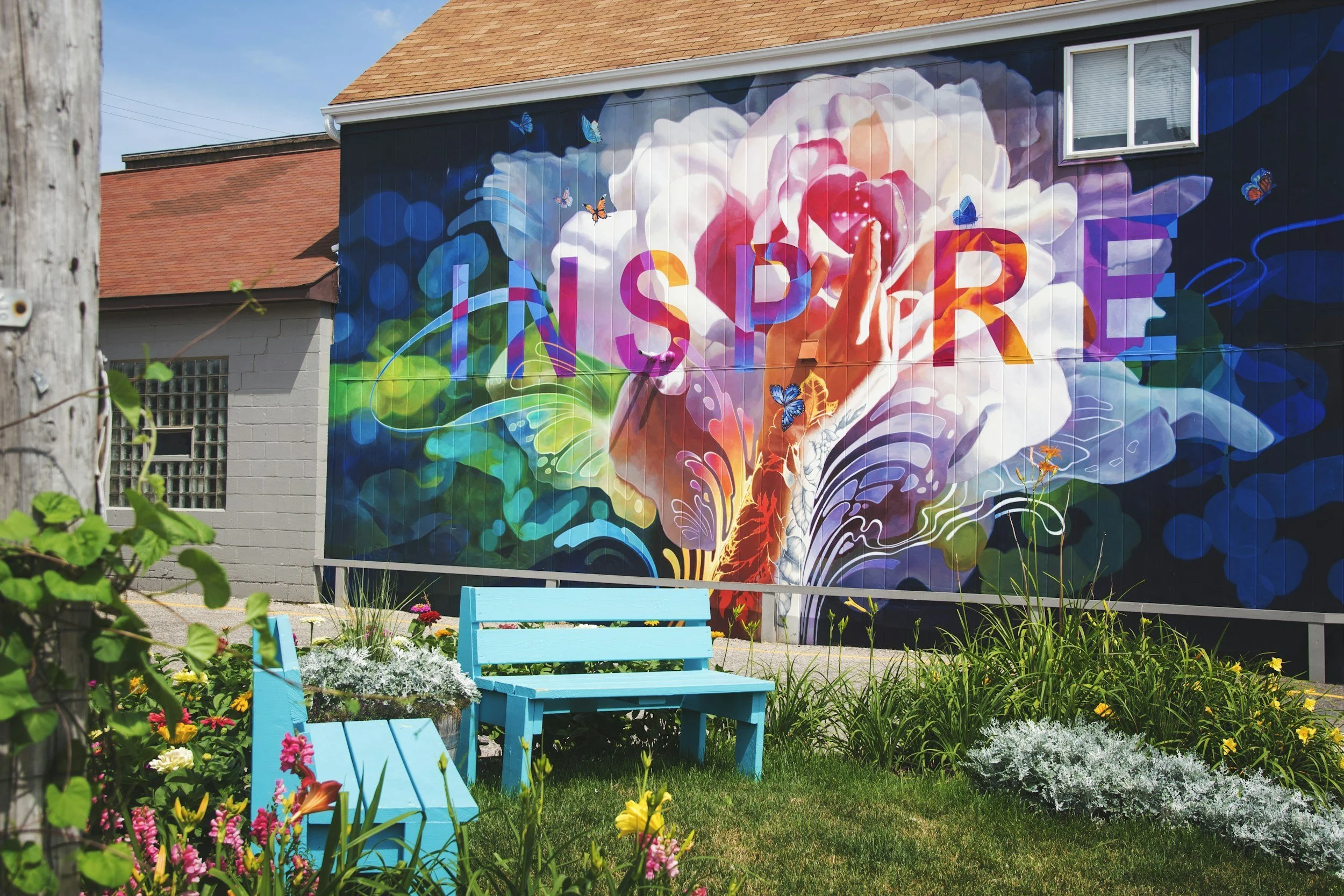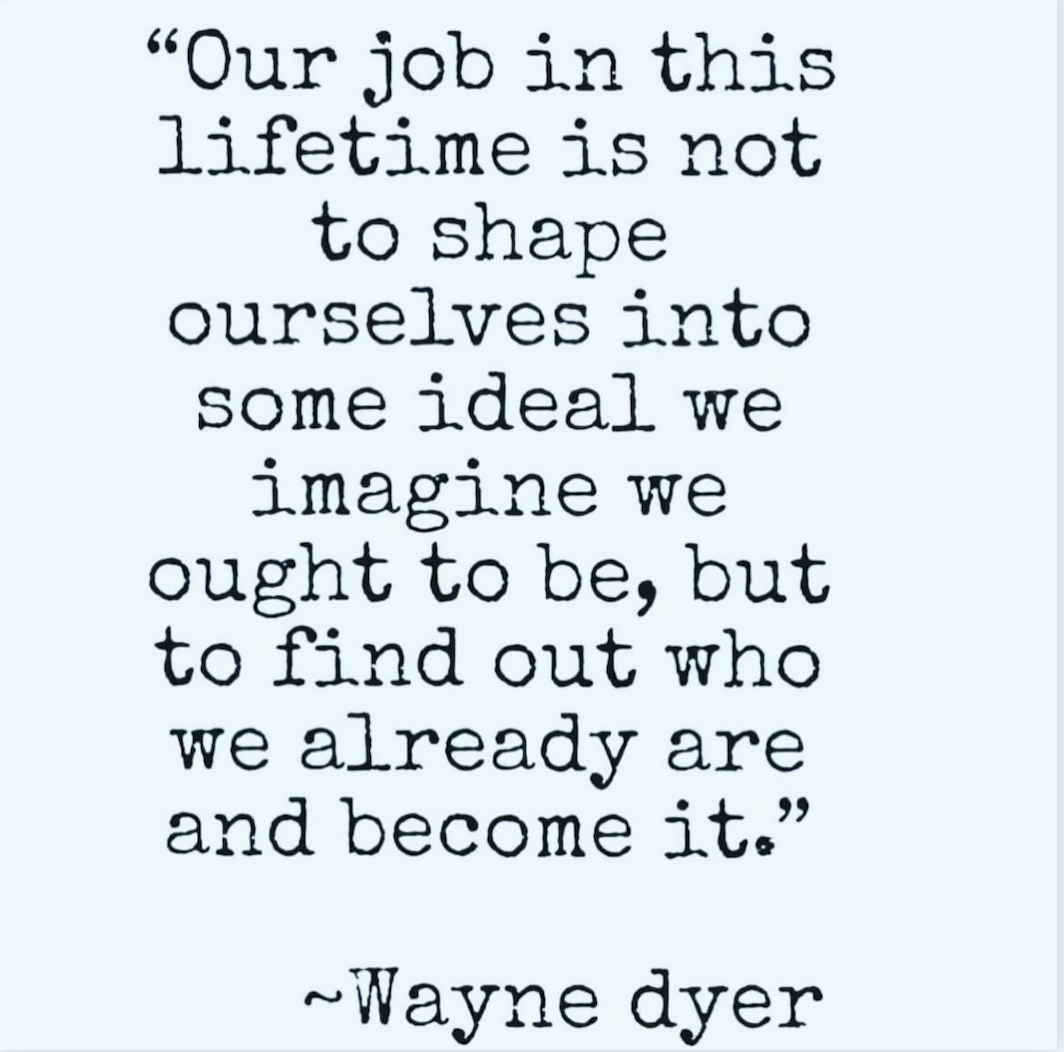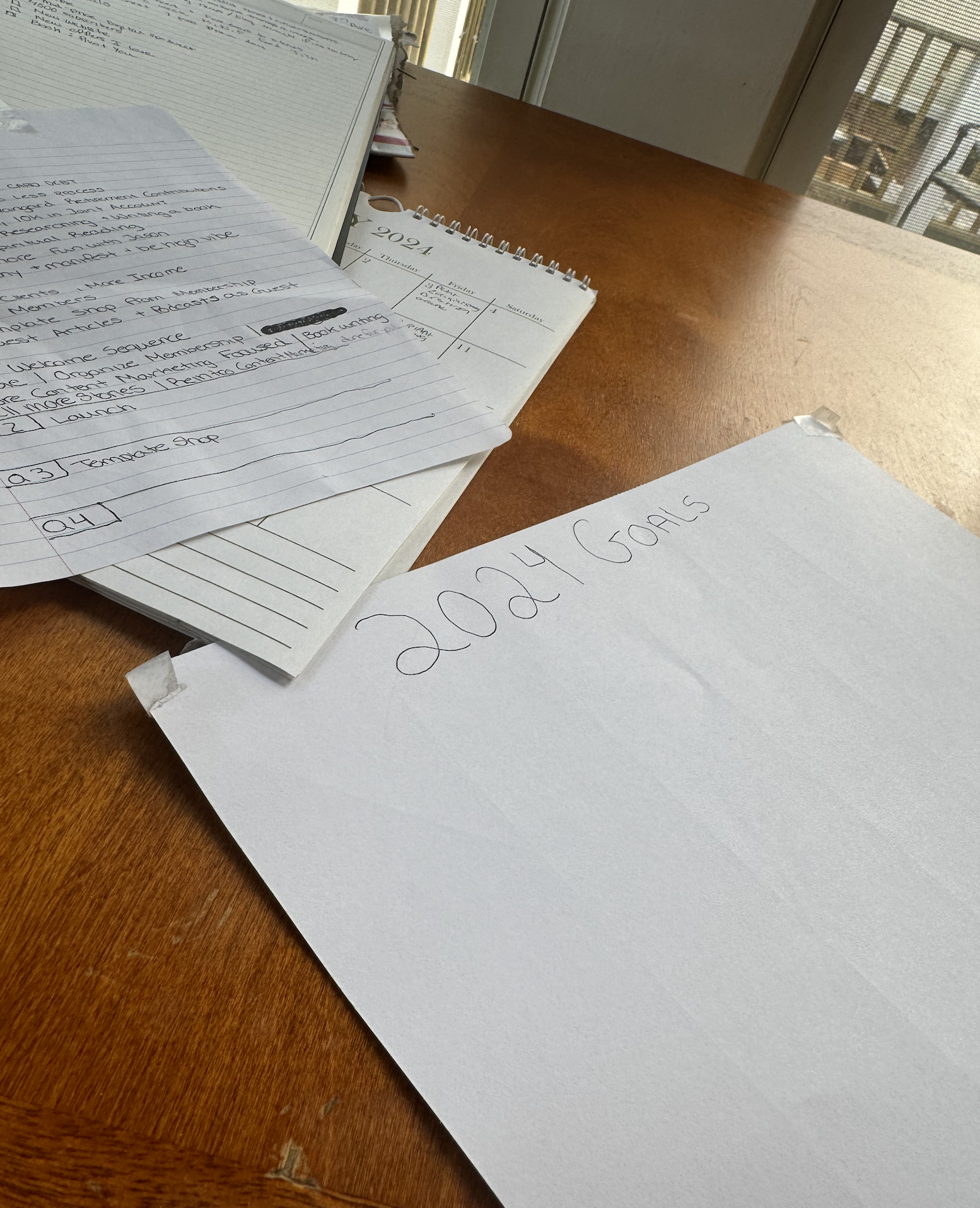Storytelling Content: Reframing Your Story To Inspire Your Audience (And Yourself)
Last Friday we f-i-n-a-l-l-y planted the vegetables we seeded in February.
It’s been a long winter — and unusually cold spring.
The seedling tomatoes taking up residence in the spare bedroom were practically climbing out the window to get outside by mid-May.
Alas, last week, the weather cooperated.
The long awaited change in season has arrived.
When I look back at the first half of 2024, all I can think is ‘I survived.’
Oral Surgery.
Comparisonitis.
Crippling anxiety.
Closing my membership.
Restructuring in my business (still in progress)
You can hear the longing for resolution in my writing from that time.
I desperately wanted to burn it all down. I thought everything needed fixing.
Ironically, it was only when I stopped trying to fix myself, I became myself.
Maybe the first half of the year didn’t go as you planned either. Maybe you’re searching for your right next step, or a more filling way to do life, business and the content that supports it.
We have a lot of year left.
It’s possible to have a satisfying 2024 even if it didn't start on January 1.
These are the four sh*tty stories I told myself kept me stuck.
And the practices that helped me f-i-n-a-l-l-y flip the script.
They gave me the small wins I needed to make the last half as the best half.
Lie #1: “I Don’t Know What I Really Want”
It’s hard to dream big when life makes you feel small.
I couldn’t imagine a ‘dream’ life, but I knew the nightmare.
Turns out, that’s a great starting point.
If you keep going on the same track, how do you end up?
What don’t you want your life to look like in six months from now?
This “anti-vision" exercise showed me that feeling stuck isn’t all bad.
Our brains have a negativity bias — essentially, we're more motivated to get away from a bad situation than to move toward a positive one unprompted.
For example, “Get six pack abs” is less self-inspiring than the desire to avoid buying a bigger size.
Seeing what isn’t working for you challenges you to change it.
Lie #2: “I Don’t Have Time”
I sucked every drop of joy from the process by telling myself I had no time for what I loved.
Truth: Sometimes you hate the process because you hate your process.
The schedule doesn’t work. The workflow doesn’t accommodate your style.
I needed to experiment with routines — and I still am.
But, instead of setting days at the start of the week for clients and saving time for my projects at the end when I was tired, I started adding time to write, read, research, and outline in the morning.
Most days “me time” is an hour or 20 minutes.
But it is enough to feel like I’m not working on other people’s priorities, sacrificing mine.
Lie #3 “Everyone Else Is Doing Better Than Me”
“My writing isn’t as popular as theirs, so why should I bother?”
My inner critic is harsh. I bet yours is too.
Here’s a trick I’m using to silence it — especially when it comes to content comparisonitis.
The “I wish I wrote that” feeling is your best inspiration. Ask:
How does this concept show up in my life?
How can my experiences provide better insight on this topic?
Turns out, that inner voice can be more motivating than anything external.
It just needs to be fed the right prompts.
Lie #4: I Need To Post Constantly To Be Relevant
9 out of 10 people who create their own content burn out regularly.
At the same time, more than 50% of people are planning to abandon social media by the end of 2024 because of spam and information overload.
Market conditions are changing rapidly.
People, especially leaders and decision makers with purchasing power, are spending less time on screens and more time on what matters to them — and it’s not posting to hit an arbitrary quota for the week.
Post less, impact more is my motto for success this season.
By success, I mean content creation that gives you:
The freedom to use your time and resources as you desire.
The confidence that comes from doing what you set out to do.
The unbeatable satisfaction of creating meaningful work that impacts others.
As I compile, write, rip out, and rewrite notes that I hope will become my first book, I constantly remind myself of the mission: “Be less hurried while helping more people.”
I am down to two to three feed posts a week on Instagram.
Plus, two stories a week (where I show my face and talk about the psychology and personal growth aspects of running a successful business as defined by the bullet points above).
I thought this would tank my reach and engagement. But my IG results are the opposite.
This is why I hate messaging that says “no one cares about you!”
My results show they want to hear more about how your story can help them.
It's not about hitting a weekly posting quota, it’s about sharing what matters to you in service of others.
Book Recommendation: Slow Productivity
If you’re mentally exhausted from keeping up with the demands of social media and its impact on your business, I can’t recommend the book Slow Productivity enough.
The author, Cal Newport, a Georgetown professor and NYT bestseller, writes about ‘the lost art of accomplishment without burnout.’
It’s for knowledge workers, like us.
This is the quote I remind myself of when I start to listen to the lies —
“We've become so used to the idea that the only reward for getting better is moving toward higher income and increased responsibilities that we forget that the fruits of pursuing quality can also be harvested in the form of a more sustainable lifestyle.”
Happy Storytelling!
Cyndi
On May 3, I (re)wrote my goals for 2024.
Jan.1 is an arbitrary date.
You can pivot any time.
Start here…
Storytelling Content Prompts
A flawless track-record of success gets you booted from NASA’s astronaut program.
They pink slip anyone who hasn’t faced significant failure and bounced back. A Harvard degree in astrophysics pales in comparison to resilience.
“While you can’t change the past, you can change the way you understand it.” — Sybil Wolin, developmental psychologist.
All stories have a transformational element. They can come from small wins: getting out of bed. Or milestone wins: paying off credit card debt. It doesn’t matter the size of transformation, it matters how you tell it. Because we all have endless problems, we all have endless stories. List the ways in which your challenges could be transformed into a lesson.
Save it in a Google doc to build a rich storybank you can dip into anytime ideas run dry.
Rebrand Story: Storytelling Framework to Explain Your Rebrand without Confusing Your Audience
STORYCRAFT PROMPTS
These storytelling prompts were originally published in the StoryCraft Newsletter, where I share two-minutes stories of doing life and business better with actionable tips to tell your stories every week-ish. Sign up for the StoryCraft Newsletter



